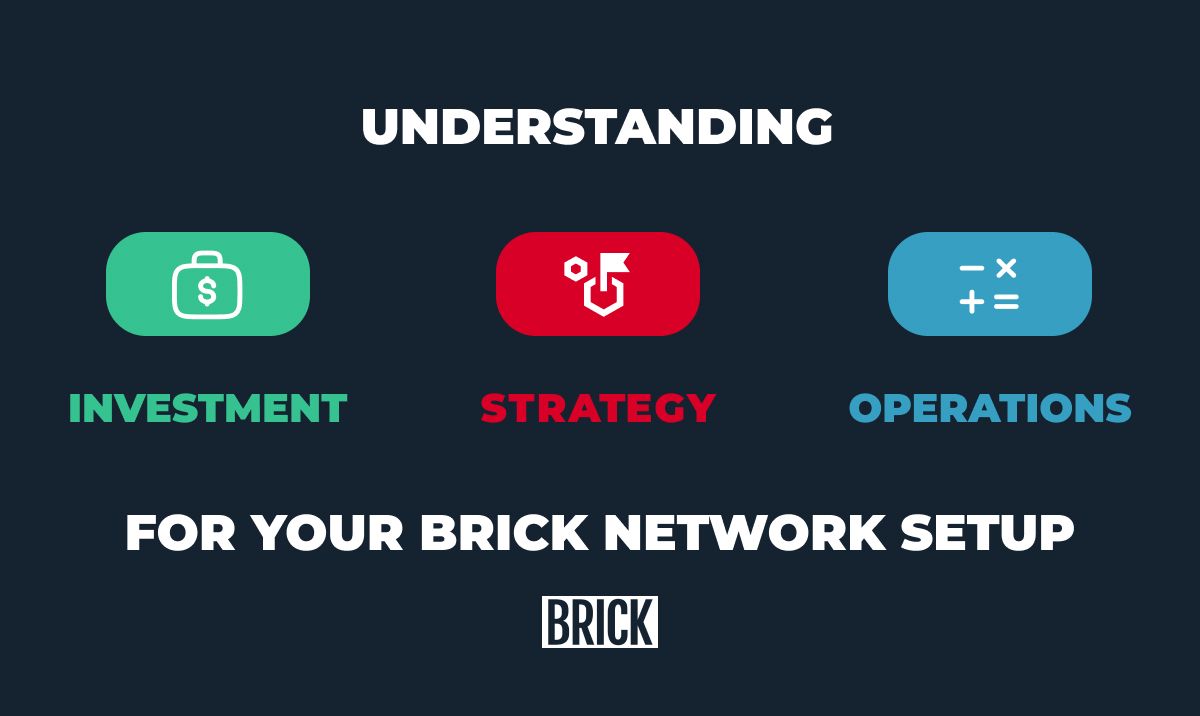Understanding Brick Network Setup: Investment, Strategy, and Operations
Considering launching a Brick network in your market? It all begins with crafting a strategic approach for growing a thriving network!

Investment and Operational Costs
To get started, you'll need a well-thought-out investment plan. This initial investment covers everything from acquiring powerbank sharing stations to handling freight costs, building your network infrastructure, deploying stations, and onboarding venue staff. The exact cost varies depending on the size of your operation and the locations you plan to serve. Beyond this initial setup, there are operational costs to consider, including routine maintenance and transport logistics. The key here is strategic resource management, which allows you to keep a firm grip on these operational costs while building a thriving network!
Setting Up Your Network
It takes roughly one to two months to receive and set up your charging stations. In some EU markets, this process moves faster as we can ship from our HQ in Sweden. This initial phase encompasses signing agreements with Brick and navigating administrative requirements such as VAT and company ID acquisition. Once that's in place, it's time to put your stations to the test. For newer markets, this might mean configuring additional services like payment providers, fiscalization, and website and app translations.
After thorough testing, you'll move on to the rollout phase, which typically spans three to four months. The duration depends on the number of locations and the complexity of installations. The goal here is speed—aim to deploy one station daily during the initial 100 days for a quicker return on investment. In the end, it usually takes around eight to ten months to establish a fully operational powerbank sharing network, including partnership discussions and station orders.
And if you're in the EU, you might be in for an even shorter journey thanks to established networks in the region.
Spotting Opportunities
Identifying potential venues and onboarding venue staff are crucial steps to launch a successful network. To identify suitable venues, you’ll need a strategic approach. Do market research, both online and offline. High-traffic areas like shopping centers, railway stations, airports, and university campuses are prime locations for powerbank stations. Finding a central hub in your market with high footfall and numerous venues can set the stage for a smooth rollout.
Now, onto preparing venue onboarding! This stage involves meeting with venue personnel and providing training to individuals with the skills to manage the stations. Helping them understand how they can handle station management, assist customers with inquiries, and troubleshoot minor issues will help them get acquainted with your service. Brick powerbank stations are designed for simplicity, offering plug-and-play functionality. Customer service inquiries are handled by Brick HQ.
Strategy for Swift Expansion
To achieve rapid expansion, you’ll want to form partnerships with key stakeholders like shopping center managers and university administrators. These partnerships not only provide potential venues but also help extend your network’s reach.
Additionally, consider using promotional offers to attract initial users, generate excitement, and encourage word-of-mouth marketing. Brick stations offer three promotional options: free rentals for up to five days, free initial minutes for rentals, or, in special cases, entirely free rentals with venue agreements covering costs. You can even distribute promotional codes to spark rentals during the initial stages!
Build a Brick Network
Powerbank sharing stations deliver considerable benefits to users, ensuring they stay connected wherever they go! While establishing such a network requires a dedication of investment and resources, it holds the promise of significant returns.
It’s perfect for those looking for a rewarding challenge!




